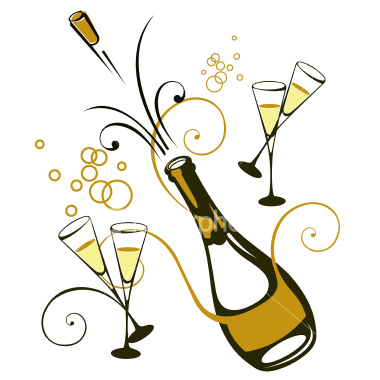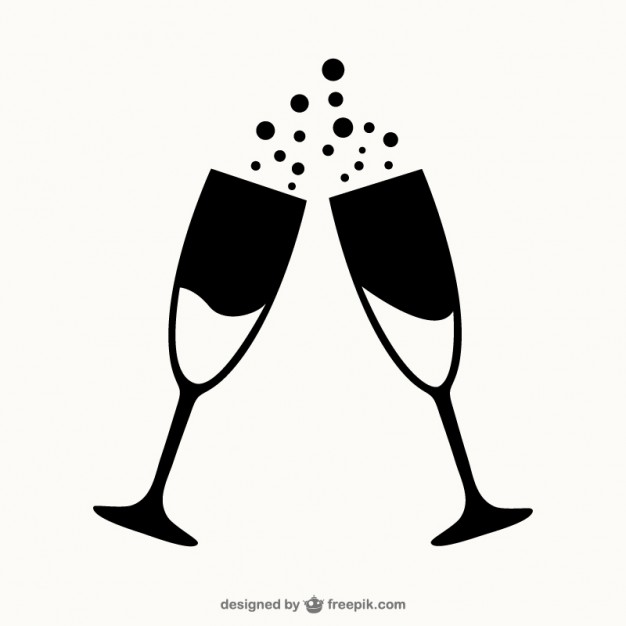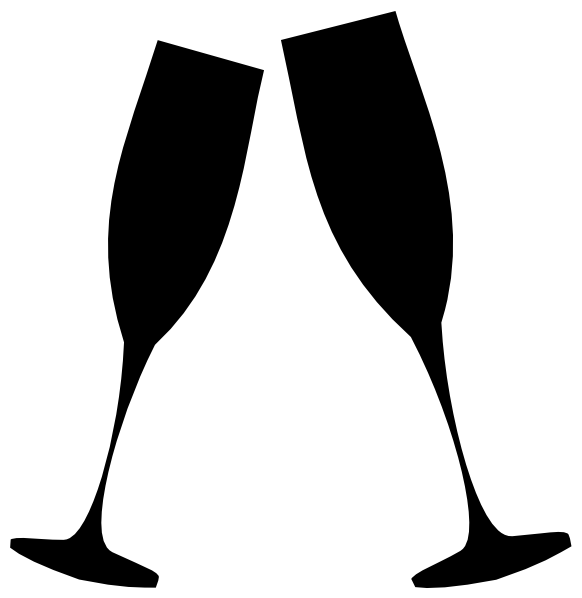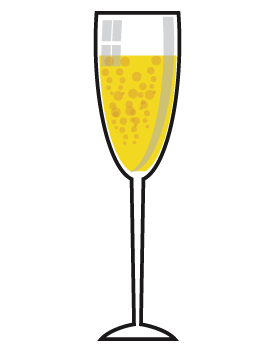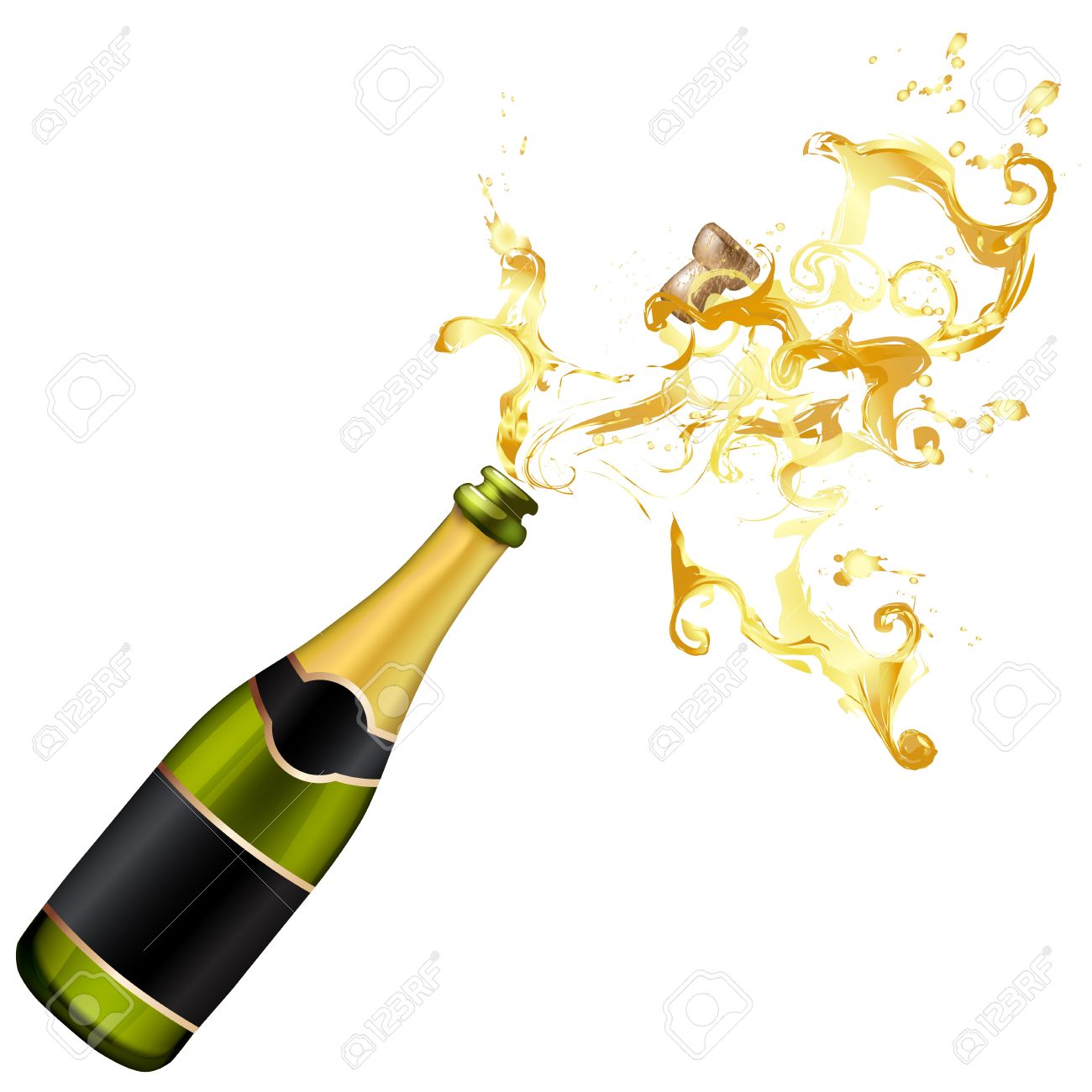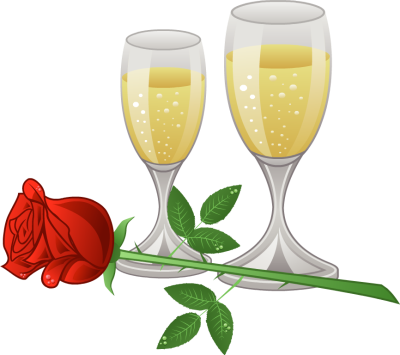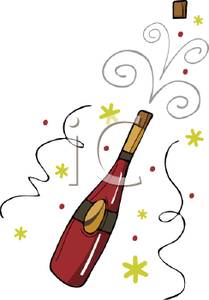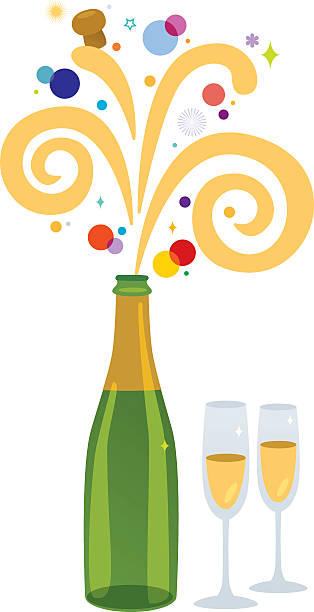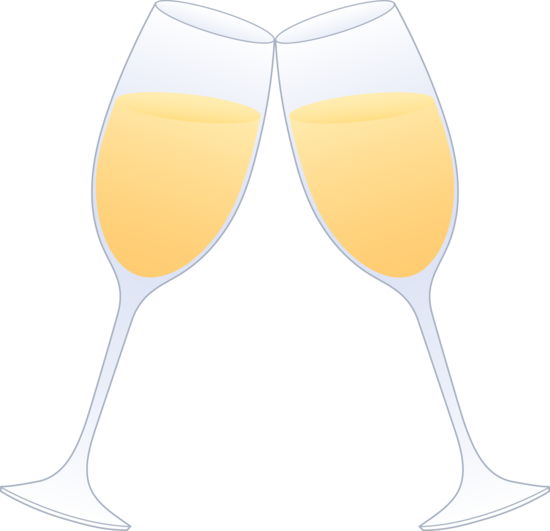Champagne Clipart
Champagne denotes premium sparkling wine exclusively from France’s Champagne region. Strict production methods involving secondary fermentation inside bottles result in bubbly wines with ultra fine mousse and complex aromas.
By appellation law, wines labelled “Champagne” must derive from designated vineyards, authorized grape varieties and meet quality standards. Otherwise it is deemed sparkling wine. Real champagne carries distinct terroir.
Grapes Used for Making Champagne
- Pinot Noir – Provides body, aromas and depth. Constitutes majority red grape.
- Chardonnay – Lends elegance, acidity and freshness as chief white grape.
- Pinot Meunier – Imparts fruitiness and roundness when blended. Third main grape permitted.
Blending multiple grapes creates balanced nuanced champagne cuvees. Single grape varietal champagnes also exist to highlight unique profiles.
Champagne Production Method
Méthode Champenoise involves:
- Pressing – Gentle first grape press to extract quality juice
- Blending – Combine and measure blend ratios
- Bottling – Pour blend into thick bottles with yeast/sugar mixture
- Second Fermentation – Bottles capped causing carbon dioxide bubbles
- Riddling – Gradually pivot bottles collecting lees sediment in neck through aging
- Disgorging – Freeze sediment plug then remove it under pressure
- Dosage – Customized topping of wine/sugar solution to finish
- Corking – Insert secured cork trap pressurized gases
This intricate method makes champagne unique.
Champagne Styles and Sweetness Levels
Champagnes are categorized by residual sugar content influencing taste:
- Brut Nature – Bone dry 0-3 grams/liter sugar
- Extra Brut – Very dry 0-6 g/l
- Brut – Dry up to 12 g/l
- Extra Dry – Slightly dry 12-17 g/l
- Sec – Medium dry 17-32 g/l
- Demi-sec – Sweet 32-50 g/l
Brut is most prevalent. Sweeter styles suit desserts. Vintage champagnes don’t specify sweetness.
Serving and Storing Champagne
Proper champagne service optimizes enjoyment:
- Chill bottle around 45°F before opening
- Open gently twisting cork sideways with covered pop
- Pour carefully at 45° angle to prevent overflow
- Use slim tall flutes to preserve bubbles and aromas
Unfinished bottles keep briefly in fridge if corked well. Long term storage requires wine cellar conditions.
Champagne in Celebrations and Cuisine
Champagne stars during special occasions, namely:
- Weddings receptions
- New Year’s Eve
- Birthdays/anniversaries
- Graduations
- Ship christenings
Cuisine applications include champagne vinegar, champagne jelly, champagne chicken recipes plus caviar and oyster pairings.
Health Effects of Champagne
While alcohol abuse poses risks, moderate champagne consumption offers potential benefits, though more research necessary:
- Boosts HDL “good” cholesterol
- Thins blood reducing clots
- Lowers inflammation
- Provides polyphenol antioxidants
- Assists healthy gut microbiome
However, no proven better effects than other wines/alcohols. Drinking should remain responsible.
Champagne Clip Art Overview
Champagne clipart contains decorative digital illustrations and designs related to champagne, wine glasses, bottles, bubbles and champagne-centric occasions.
These stylized graphics work for enhancing celebratory communications and sparkling wine branding.
Uses of Champagne Clip Art
Creative applications of champagne vector images/photos include:
- Party flyers/banners
- Wedding signage
- Restaurant menus
- Bar/nightlife promotions
- Event planning decorations
- Greeting cards
- Seasonal holiday posts
- Champagne bottle labels
In this page clipartix present 47 champagne clipart images free for designing activities. Lets download Champagne Clipart that you want to use for works or personal uses.

